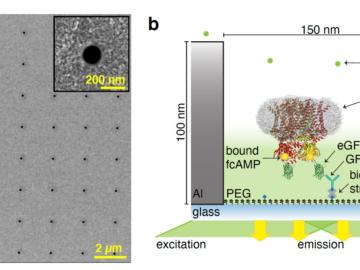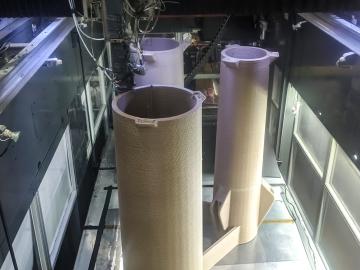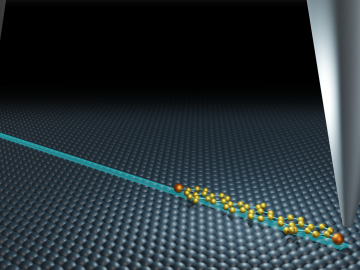
Filter News
Area of Research
- Advanced Manufacturing (1)
- Biology and Environment (6)
- Computational Biology (1)
- Computational Engineering (1)
- Computer Science (7)
- Electricity and Smart Grid (1)
- Energy Science (19)
- Fusion and Fission (2)
- Fusion Energy (6)
- Isotopes (1)
- Materials (13)
- Materials for Computing (4)
- National Security (3)
- Neutron Science (24)
- Nuclear Science and Technology (4)
- Quantum information Science (1)
- Sensors and Controls (1)
- Supercomputing (8)
News Type
News Topics
- (-) Artificial Intelligence (16)
- (-) Big Data (17)
- (-) Biomedical (11)
- (-) Fusion (9)
- (-) Grid (22)
- (-) Microscopy (11)
- (-) Neutron Science (27)
- 3-D Printing/Advanced Manufacturing (34)
- Advanced Reactors (13)
- Bioenergy (17)
- Biology (21)
- Biotechnology (4)
- Buildings (21)
- Chemical Sciences (13)
- Clean Water (14)
- Composites (11)
- Computer Science (42)
- Coronavirus (11)
- Critical Materials (12)
- Cybersecurity (3)
- Emergency (1)
- Energy Storage (32)
- Environment (48)
- Exascale Computing (1)
- Fossil Energy (1)
- Frontier (1)
- High-Performance Computing (12)
- Hydropower (6)
- Irradiation (2)
- Isotopes (5)
- ITER (3)
- Machine Learning (14)
- Materials (36)
- Materials Science (34)
- Mathematics (3)
- Mercury (3)
- Molten Salt (5)
- Nanotechnology (12)
- National Security (3)
- Nuclear Energy (19)
- Partnerships (2)
- Physics (4)
- Polymers (10)
- Quantum Computing (5)
- Quantum Science (12)
- Security (1)
- Simulation (9)
- Space Exploration (10)
- Statistics (1)
- Summit (8)
- Transportation (36)
Media Contacts

Staff at Oak Ridge National Laboratory organized transport for a powerful component that is critical to the world’s largest experiment, the international ITER project.

Researchers working with Oak Ridge National Laboratory developed a new method to observe how proteins, at the single-molecule level, bind with other molecules and more accurately pinpoint certain molecular behavior in complex

Equipment and expertise from Oak Ridge National Laboratory will allow scientists studying fusion energy and technologies to acquire crucial data during landmark fusion experiments in Europe.

A team of researchers at Oak Ridge National Laboratory demonstrated the ability to additively manufacture power poles from bioderived and recycled materials, which could more quickly restore electricity after natural disasters.

Oak Ridge National Laboratory researchers demonstrated their wireless charging technology on an autonomous electric vehicle for the first time in a project with Local Motors.

Researchers from NASA’s Jet Propulsion Laboratory and Oak Ridge National Laboratory successfully created amorphous ice, similar to ice in interstellar space and on icy worlds in our solar system. They documented that its disordered atomic behavior is unlike any ice on Earth.

Researchers at Oak Ridge National Laboratory’s Spallation Neutron Source have developed a diamond anvil pressure cell that will enable high-pressure science currently not possible at any other neutron source in the world.

A method developed at Oak Ridge National Laboratory to print high-fidelity, passive sensors for energy applications can reduce the cost of monitoring critical power grid assets.

A new Department of Energy report produced by Oak Ridge National Laboratory details national and international trends in hydropower, including the role waterpower plays in enhancing the flexibility and resilience of the power grid.

Oak Ridge National Laboratory’s Center for Nanophase Materials Sciences contributed to a groundbreaking experiment published in Science that tracks the real-time transport of individual molecules.


